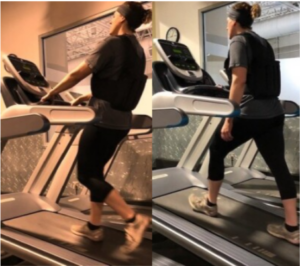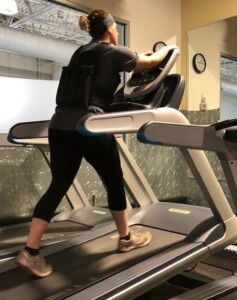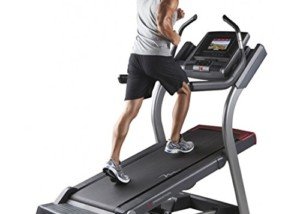
Nearly every person who uses a treadmill incline does it wrong, preventing weight loss and creating a false sense of fitness achievement.
An incline offers a poorly conditioned or obese person — who cannot run or move swiftly — a safe way to challenge the cardiovascular system and burn unwanted fat.
Incline walking is also good for people who can’t move fast for other reasons, such as injury, or who simply want to take a break from running and try something different.
A slow walk on an incline can induce weight loss as well as improved aerobic fitness.
Benfits of Incline Treadmill Walking
– Challenges the cardiovascular system without requiring speed
– Because an incline challenges the heart at a slower walking pace, this means less impact on knees and hips.
– Recruits lower back muscles to keep your body erect
– Provides a stretch to the calves and Achilles tendons
– A great alternative for people suffering from heel pain (plantar fasciitis) because of the minimized heel-strike impact, and the stretching of the foot with each step
– An alternative for people who are getting bored with the same ‘ol flat walking or jogging
How to Correctly Walk on a Treadmill Incline
You will not reap benefits of incline walking if you hold onto the treadmill.

Source: ©Lorra Garrick
In the left image, as she holds onto the treadmill, her body is leaning back, which is unnatural for walking on an incline. If you were walking up a slope outdoors, would your body be angled back like this? NO.
The angled-back position can also result in repetitive stress injuries to the hips and feet.
In the right image, her arms are free, moving naturally, and hence, her body is vertical and in a natural position.
No help from holding on means more calories burned, even though no matter what you do on a treadmill, the computer calorie readout will always be the same for any given speed and incline.
Do not place your hands on any part of the treadmill other than for momentary balance checks. To continuously hold on will cancel out the effect of the slope, even at faster speeds.
So be sure you swing your arms naturally at your sides, as you would if you were walking up a hill outside.
Illusion of Correction
You might be thinking that untilting your body by clinging onto the console and pulling yourself forward will make things right. WRONG.

Source: ©Lorra Garrick
In the above image, her very slight forward-lean may seem like a fix to the tilting-backward problem.
But come on, certainly you can see that the holding fast to the treadmill is relieving her core from most of the work it’s supposed to do when walking an incline!
Her entire upper body is frozen, while only her lower body is moving. Her core is getting a free ride. Plus, the posture is not natural.
If you cannot keep up with the tread without holding on, then 1) lower the incline, or 2) reduce the speed.
Some people with lower back issues may feel aching at that location, upon walking a grade without holding onto the treadmill.
But rather than hold on to make the low backache go away, these walkers should REDUCE THE SPEED or LOWER THE INCLINE, to give these weak back muscles a chance to get stronger!
If you’ve been diagnosed with an injury that makes walking on a treadmill induce joint discomfort, then you should stay off the machine — try a stationary bike or elliptical machine — until the injury heals.
 Lorra Garrick is a former personal trainer certified through the American Council on Exercise. At Bally Total Fitness she trained women and men of all ages for fat loss, muscle building, fitness and improved health.
Lorra Garrick is a former personal trainer certified through the American Council on Exercise. At Bally Total Fitness she trained women and men of all ages for fat loss, muscle building, fitness and improved health.
.









































